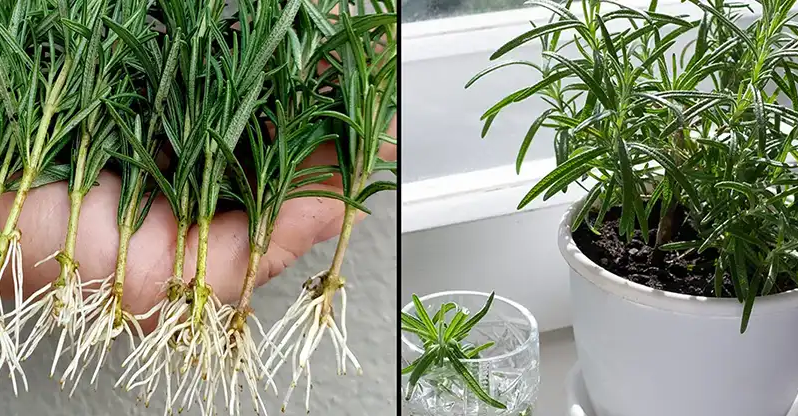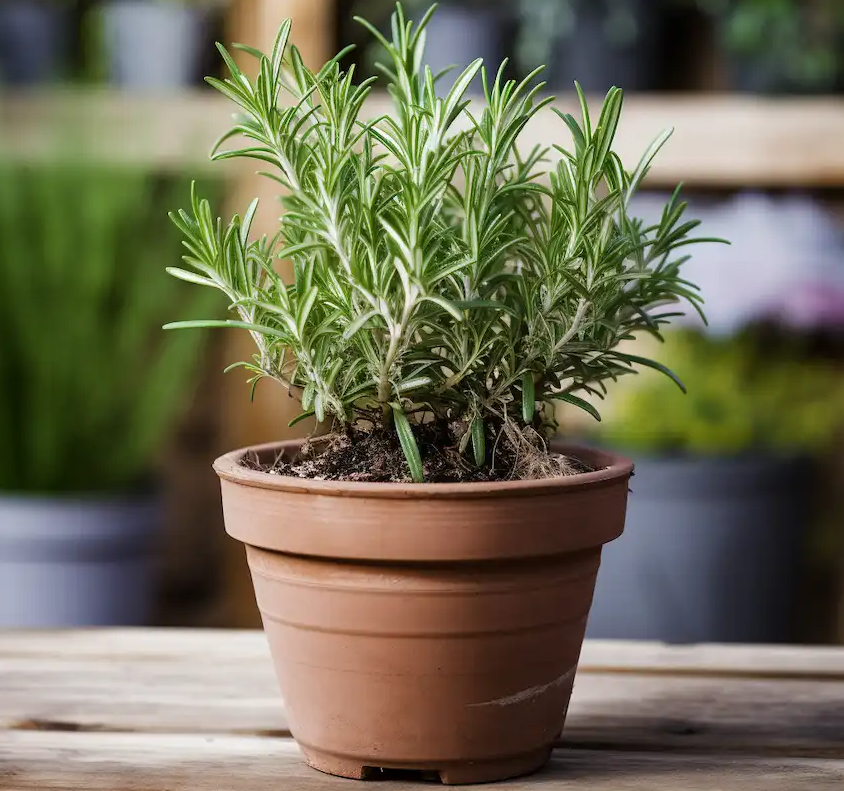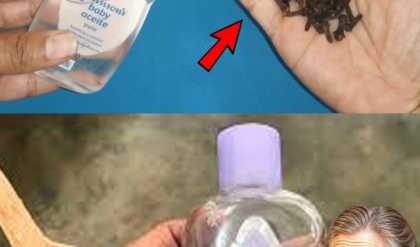Rosemary is a fragrant and versatile herb that adds a unique flavor to many dishes. Growing it at home ensures you always have fresh rosemary on hand, ready to enhance your culinary creations. One of the simplest ways to propagate rosemary is through cuttings. In this guide, we’ll walk you through the steps to grow rosemary from cuttings in water and then transplant them into pots for long-term growth, giving you a steady supply of this aromatic herb.

Materials You’ll Need:
- A healthy rosemary plant
- Clean pruning shears or scissors
- A glass or vase
- Distilled or filtered water
- Rooting hormone (optional)
- Small pots with drainage holes
- Well-draining potting mix
- Plastic bags or plastic wrap
- Rubber bands or twine
- Sunlight or grow lights
Step 1: Gather Rosemary Cuttings
Start by choosing a healthy, mature rosemary plant. Select a stem that’s free of diseases or pests, and cut it just below a leaf node. Your cuttings should be around 4-6 inches long, ensuring you have enough length for rooting.
Step 2: Prepare the Cuttings
Remove the leaves from the lower 2-3 inches of the cuttings, leaving only a few leaves at the top. This helps reduce moisture loss while the cuttings are rooting.
Step 3: Rooting Hormone (Optional)
While not essential, using rooting hormone can increase your success rate. Dip the cut end of each cutting into the rooting hormone and shake off any excess powder or gel.
Step 4: Place Cuttings in Water
Fill a glass or vase with 2-3 inches of distilled or filtered water. Place the cut ends of the rosemary cuttings into the water, ensuring they’re fully submerged. Change the water every few days to keep it fresh and promote healthy root growth.

Step 5: Maintain Humidity
To help your cuttings stay hydrated and encourage root development, cover the glass or vase with a plastic bag or plastic wrap. Secure it with rubber bands or twine, creating a mini greenhouse effect that keeps the humidity high.
Step 6: Provide Adequate Light
Place the container in a location with indirect sunlight. If natural light is insufficient, you can use grow lights to provide the necessary light for your rosemary cuttings. Avoid direct sunlight, as it can dry out the cuttings.
Step 7: Monitor and Wait
Keep an eye on the water level and ensure the cuttings remain submerged. Within 2-6 weeks, you should begin to see roots forming. Once the roots are about 2-3 inches long, your cuttings are ready to be transplanted.
Step 8: Transplant into Pots
Choose small pots with drainage holes and fill them with well-draining potting mix. Carefully remove the cuttings from the water, being gentle with the roots. Plant each cutting in a pot, burying it 1-2 inches deep to provide stability.

Step 9: Water and Care
Water the newly transplanted rosemary thoroughly, and place the pots in a sunny location where they can receive plenty of light. Water the plants whenever the top inch of soil feels dry. Ensure good airflow to avoid fungal diseases or mold growth.
Step 10: Enjoy Fresh Rosemary
With proper care, your rosemary cuttings will grow into healthy, robust plants. As they mature, you can harvest fresh rosemary whenever you need it to flavor your dishes.
Growing rosemary from cuttings in water and transplanting them into pots is a rewarding and simple way to keep fresh rosemary at hand. With patience and attention, you’ll soon have a flourishing rosemary plant that not only enhances your cooking but also adds a touch of greenery to your home. Happy gardening!
Inspired by this? Share the article with your friends!





